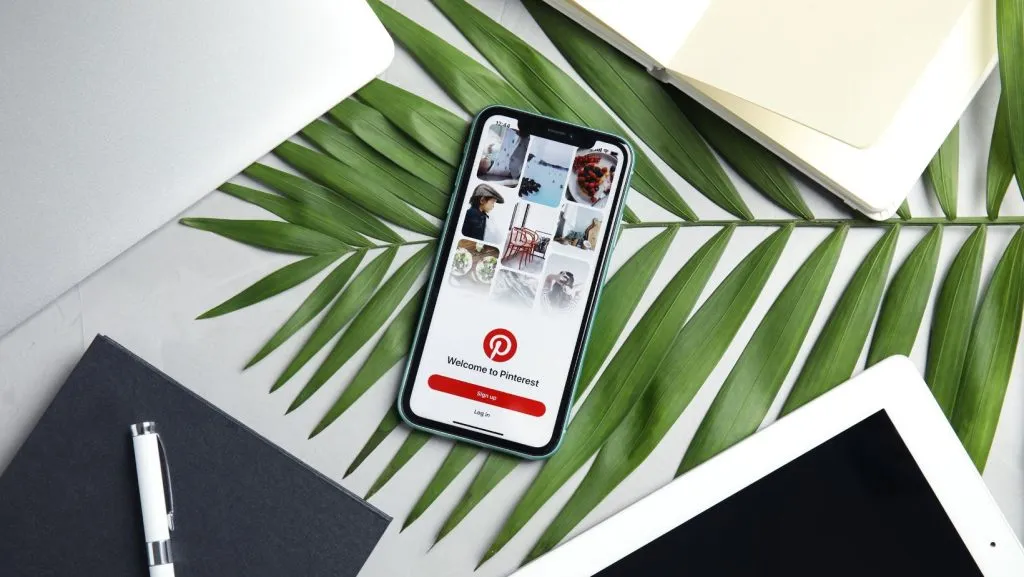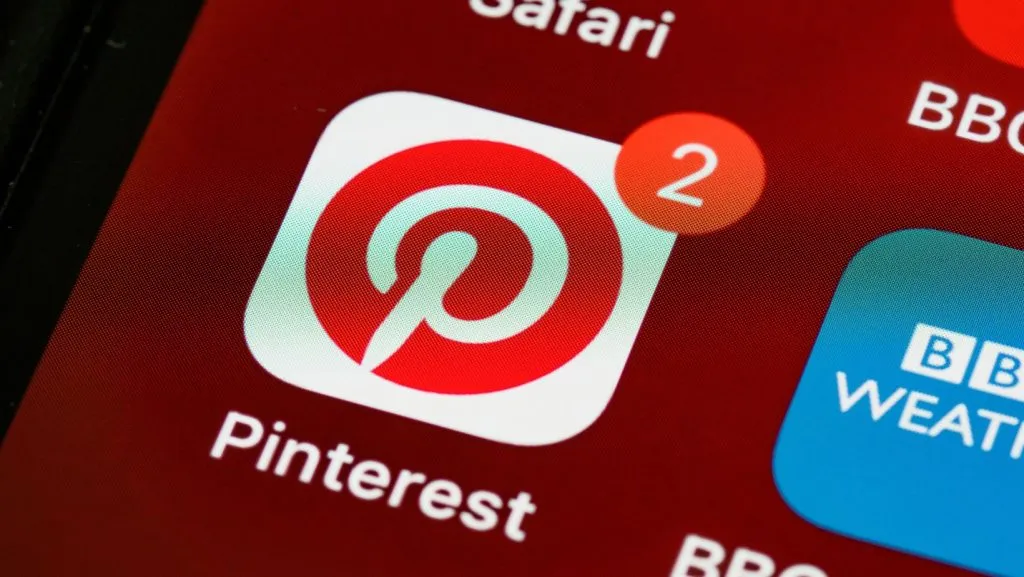Introduction to Pinterest: A Powerful Social Media Platform
If you’re a small business owner, exploring the vast realm of social media network platforms might feel daunting. There’s a great way to simplify your social media marketing strategy, though – consider Pinterest. Unlike other social platforms, Pinterest acts as a visual search engine, drawing in weekly pinners and active users looking for new ideas and products.
Pinterest: More Than Just a Social Media Site
While Pinterest might seem like just another social media site, it’s a platform that goes beyond typical social interactions. With its focus on visual content, it provides a unique opportunity to present your business in a highly engaging manner. Pinterest users tend to be on the hunt for new things, making it a great place to introduce your products to a new audience.
Unlike other social media sites, Pinterest has a very long life for your posts. In fact, the first few hours, days, or even weeks after your pin are very quiet in terms of traffic. Evergreen high quality content works best for Pinterest. This is the perfect platform for anyone who get’s burned out doing daily updates on traditional social media platforms.
Harnessing the Power of Pinterest for Your Small Business
Operating a small business involves wearing many hats. Adding the role of a social media strategist might seem overwhelming, but using Pinterest can be an easy way to drive website traffic, increase brand awareness, and attract potential customers. Pinterest’s unique ability to act as a visual search engine can help your business name appear in search results, giving you exposure to a larger, interested audience.
In this blog post, we’ll take a quick look at how you can effectively use Pinterest as a valuable marketing tool. You’ll learn about setting up a Pinterest business account, best practices for pinning, and even how to leverage Tailwind to maximize your Pinterest traffic. So, buckle up and prepare to unlock the power of this social network for your small business.

Understanding Pinterest as a Visual Search Engine
Stay tuned to learn how to turn your Pinterest profile into a powerhouse for promoting your website.
What Does It Mean to Be a Visual Search Engine?
We’ve mentioned the term ‘visual search engine’ already, but what does it truly mean? Unlike your standard social media platform, Pinterest functions much like Google, but with a focus on images instead of text. Pinterest users take advantage of this unique visual platform to search for ideas, products, and inspiration using the search bar. As a business owner, this offers you a great opportunity to present your products in an engaging, visual manner.
The Role of High-Quality Images
What catches your eye when you use Pinterest? The first thing is usually high-quality images. When you create pins, using high-quality images is a best practice that can significantly influence your Pinterest content’s success. These images should represent your product categories, blog posts, or any other aspect of your business you’d like to highlight. These vibrant visuals make Pinterest a great place to promote both your physical product and your online store.
Harnessing the Power of Visual Content
Pinterest is all about the visuals. Whether you’re pinning your own content or sharing other people’s content, maintaining high standards for visual content is crucial. A compelling image that’s directly linked to your website URL is an effective way to catch Pinterest users’ attention and drive referral traffic to your online store or blog.

Setting Up Your Pinterest Business Account: The First Steps
As we move forward, we’ll delve into the specifics of creating a Pinterest business account and how to optimize your pins for maximum visibility. Ready to boost your website traffic using Pinterest? Keep reading.
Choosing the Right Business Name
The first step in setting up a Pinterest business account is choosing an appropriate business name. This name should directly reflect your niche or industry, making it easy for potential customers to identify what you offer. A good idea is to incorporate relevant keywords into your business name to improve visibility in search results.
Adding Your Website URL
After setting up your business name, the next step involves adding your website URL to your Pinterest profile. This is an easy way to provide additional information about your business, increase credibility, and direct Pinterest users to your site. It also serves as a direct link between your Pinterest content and your online store or blog posts.
Choosing a Cover Photo that Reflects Your Brand
Your profile page is your business’s face on Pinterest, so it’s important to choose a cover photo that accurately represents your brand. The cover photo should align with your brand’s aesthetic, attracting your target audience and making a good first impression. An appealing cover photo can be a great way to convert Pinterest users into potential customers.

Creating Pinterest Boards: A Space for Your Content
Setting up your Pinterest business account is just the beginning. Stay tuned as we discuss how to create Pinterest boards and how to use relevant keywords effectively to optimize your Pinterest content. The journey towards a successful Pinterest marketing strategy has just started.
Crafting Your Own Boards
Once your Pinterest business account is set up, the next step is to create your own boards. Each board should have a specific theme related to your business or blog posts. This makes it easier for Pinterest users to navigate your profile and find content that interests them. Your Pinterest boards are a great way to showcase your products, ideas, and brand personality.
Diversifying Boards: Regular, Secret, and Group
Pinterest offers a variety of board types: regular, secret, and group boards. Regular boards are the ones you’ll use most frequently for posting your pins. Secret boards, on the other hand, are hidden from public view and can be used to save content ideas or strategies. Group boards, also known as community boards or collaborative boards, allow multiple users to pin to the same board. This is a great opportunity to engage with a new audience and expose your brand to potential customers.
The Power of Collaborative Boards
Collaborative boards can be a powerful tool in your Pinterest strategy. By joining group boards related to your niche, you can share your pins with a broader audience, beyond just those who follow your Pinterest account. It’s also an effective way to build relationships with other users, share new ideas, and gain inspiration from others’ content.

Importance of Relevant Keywords: Making Your Content Discoverable
In this next section, we’ll delve into the importance of relevant keywords on Pinterest. We’ll learn how to use keywords to boost your Pinterest content and ensure it reaches your target audience. Get ready to take your Pinterest marketing strategy to the next level.
The Role of Keyword Research
Just as with any search engine, keywords play a significant role on Pinterest. They help your content appear in search results when Pinterest users are looking for specific items or ideas. Keyword research, therefore, becomes a fundamental aspect of your Pinterest strategy, ensuring that your pins reach your target audience.
Implementing Keywords in Your Pinterest Content
After identifying the best keywords related to your business, the next step is to incorporate them into your Pinterest content. These relevant keywords should be used in pin descriptions, board titles, and even in your business name and profile description. This practice makes it easier for Pinterest users to find your content when they use the search bar.
Uncovering the Best Keywords
So, how do you find the best keywords for your business? Pinterest itself is an excellent tool for keyword research. Start by typing a keyword related to your product categories into the search bar. Pinterest will provide additional keyword suggestions based on what users are commonly searching for. These can give you new ideas and help you discover other keywords to use in your Pinterest content.
Boosting Pinterest Traffic with Tailwind: A Smart Strategy
With the knowledge of how to effectively use relevant keywords on Pinterest, you’re one step closer to mastering the platform. Coming up, we’ll discuss how to leverage Tailwind to boost your Pinterest traffic and make your Pinterest marketing strategy even more effective.
An Introduction to Tailwind
Tailwind is a Pinterest-approved scheduling tool, designed to help you post at the best times for engagement. It’s a great way to ensure your pins reach your target audience when they’re most active on the platform. Not only does Tailwind help increase your Pinterest traffic, but it also frees up time for you to focus on creating great content.
Navigating Tailwind’s Free Trial
To start, Tailwind offers a free trial, providing an easy way to test the tool’s effectiveness for your business. This trial allows you to schedule a specific number of pins and gain access to basic analytics. It’s a great opportunity to see how Tailwind can enhance your Pinterest strategy without any upfront commitment.
Best Practices for Using Tailwind
Tailwind can be used to schedule pins, reshare popular pins, and even join Tailwind communities (similar to Pinterest’s group boards). For the best results, ensure that your pins are scheduled at optimal times, when your target audience is most likely to be active. Also, keep an eye on your most successful pins through Tailwind’s analytics and consider resharing them to boost engagement.
Developing a Pinterest Marketing Strategy: Key Components
As you grow more comfortable with Tailwind, you’ll find it to be an invaluable tool in your Pinterest strategy. Coming up next, we’ll dive into developing a comprehensive Pinterest marketing strategy, with focus on idea pins, product pins, promoted pins, and Pinterest ads. These techniques will help your small business shine on this bustling visual platform.
The Power of Video Pins
Video Pins are a recent addition to Pinterest, providing businesses a great way to share detailed, multi-page content. These pins can include step-by-step instructions, story-like sequences, or different aspects of a single product. For your business, video pins offer a creative platform to build brand awareness and engage Pinterest users.
Product Pins & Rich Pins
Rich Pins and product pins are essential tools in your Pinterest marketing strategy, especially for online stores. Product Pins display information like price and availability directly on the pin, making it easy for potential customers to make purchasing decisions. Rich Pins, on the other hand, provide additional information by linking directly to your website. They come in four types: product, recipe, article, and app pins. Depending on your type of business, these pins can significantly improve your Pinterest profile’s functionality.
Using Promoted Pins and Pinterest Ads
As the name suggests, Promoted Pins are paid advertisements that appear in users’ search results and feeds. They blend naturally with regular pins, but have a much broader reach. This makes them a good idea for businesses looking to attract new customers and increase website traffic.
Pinterest Ads work similarly to Promoted Pins, but offer more advanced targeting options. With a Pinterest business account, you can create ad campaigns to reach your target audience based on demographics, interests, or keywords.
With these strategies in place, you’ll be well-equipped to build a robust Pinterest presence. But remember, successful Pinterest marketing isn’t just about pinning—it’s also about understanding your audience.

Using Pinterest Analytics: Understand Your Target Audience
Up next, we’ll discuss using Pinterest Analytics to fine-tune your approach and deliver content your audience will love.
Introduction to Pinterest Analytics
To refine your Pinterest strategy, you need insights about your Pinterest users. That’s where Pinterest Analytics comes in. This valuable tool provides data on the performance of your pins and boards, as well as the interests and behavior of your audience.
The Value of Data
With Pinterest Analytics, you can identify your most popular pins and boards, understand what content resonates with your audience, and see when your followers are most active. Such insights are essential for creating content that aligns with your audience’s preferences and habits, enhancing your potential to attract new customers.
Interpreting the Analytics
Analytics also reveal which of your pins drive traffic to your website. This information can help you identify what types of content or specific products are attracting attention. For instance, if pins featuring home decor are driving high traffic, it might be a good idea to focus more on this type of product in your future pins and boards.
Utilizing Insights for Future Content
The data from Pinterest Analytics can guide your content creation, ensuring that your efforts align with your audience’s interests. By understanding the aspects of your Pinterest content that attract the most attention, you can tailor future pins to maximize engagement and website traffic.
Analytics is not just about understanding past performance—it’s a tool for shaping future success. In the next section, we’ll explore Pinterest advertising, a potent method to get your business in front of a larger audience and truly maximize your Pinterest marketing strategy.

Pinterest for E-Commerce: A Thriving Online Storefront
Directly link your products to your Pinterest pins.
Pinterest and Your Online Store
Luckily, Pinterest isn’t just any social network; it’s also an incredibly powerful platform for e-commerce. For online stores, Pinterest offers a unique blend of discovery and direct purchase, transforming browsing users into potential customers. This visual platform is particularly useful for businesses that sell products with strong visual appeal, like home decor or fashion.
Shop the Look and Product Pins
One of the best ways to use Pinterest for e-commerce is through the Shop the Look and Product Pins features. Shop the Look Pins allow users to find and buy products directly from your pin. These pins work well with lifestyle images, where multiple items are showcased together. Product Pins, on the other hand, provide real-time pricing, availability, and a direct link to the product on your website.
Diversify Your Product Categories
In order to attract a wide range of Pinterest users, it’s a good idea to diversify your product categories on different boards. By showcasing a variety of products, you’re more likely to reach a broad target audience and direct them to your online store. Remember, Pinterest users are often in discovery mode, looking for new ideas and products.
Leverage Customer Reviews
Pinterest users value the opinions of others. Incorporating customer reviews in your pins can significantly boost the credibility of your products. When potential customers see positive reviews, they’re more likely to trust your brand and make a purchase.
Pinterest is more than a social media platform; it’s a powerful e-commerce tool. By leveraging its unique features and a well-planned Pinterest marketing strategy, your online store can thrive.
Utilizing Pinterest for Blog Promotion: Drawing Traffic to Your Posts
Stay tuned for our last section, where we’ll discuss final best practices and tips to optimize your Pinterest presence.
Turning Blog Posts into Pins
Pinterest is a fantastic tool to promote your blog posts. One effective way to do this is by turning key points or headings from your blog post into individual pins. Remember to use high-quality images and relevant keywords in your pin descriptions to attract potential readers from your target audience.
Linking Directly to Your Blog
Each pin you create for your blog should have a direct link to the specific blog post it represents. This way, when a user clicks on the pin, they’re taken directly to your blog, boosting your referral traffic. Additionally, ensure your blog URL is visible on your Pinterest profile page, further strengthening the connection between your Pinterest account and blog.
Creating Boards for Blog Categories
If you have different categories or topics on your blog, it’s a great idea to create separate Pinterest boards for each category. This not only makes your Pinterest page more organized, but also allows Pinterest users to easily find content that interests them, encouraging them to explore more of your blog posts.
Leveraging Rich Pins for Blog Promotion
Use Article Rich Pins for blog posts. These types of rich pins provide more information about the post directly on the pin, including the headline, author, and a story description. This additional information can attract more Pinterest users to click through to your blog, increasing website traffic.
By utilizing Pinterest effectively, you can turn the platform into a powerful promotional tool for your blog. As we wrap up this guide, remember that success on Pinterest comes from consistent efforts, strategic use of keywords, engaging visual content, and understanding your audience’s preferences. Happy pinning!
Harnessing the Power of Pinterest
In summary, Pinterest is far more than just a social media site—it’s a powerful visual search engine and an effective marketing tool that can significantly boost your brand awareness and website traffic. With over 478 million active users as of my knowledge cutoff in September 2021, and likely many more today, Pinterest presents a great opportunity to reach a broad target audience and potential customers.

As you begin your Pinterest journey, remember these key points:
- Create a Pinterest business account and optimize your profile for your target audience.
- Create diverse Pinterest boards, leveraging regular, secret, and group boards to showcase your content.
- Use relevant keywords throughout your profile, boards, and pins to make your content easily discoverable.
- Leverage tools like Tailwind to schedule your pins and increase your reach.
- Develop a comprehensive Pinterest marketing strategy, including the use of Video Pins, Product Pins, and Promoted Pins.
- Use Pinterest Analytics to understand your audience and refine your strategy.
- If you’re running an online store, take full advantage of Pinterest’s e-commerce features.
- Promote your blog posts effectively by creating pins that link directly to your blog.
Remember, it’s not just about pinning any content; it’s about pinning the right content—high-quality images and information that your target audience values. Be consistent, be creative, and always stay in tune with your audience’s interests.
Pinterest is a dynamic platform, always evolving with new features and best practices. Stay updated, keep experimenting, and you’ll master the art of Pinterest marketing. Here’s to your success on this incredible visual platform!



Leave a comment